The Korea Institute of Design Promotion has established the "Ulsan Design-Lead Manufacturing Innovation Center" at Ulsan University. This center aims to enhance the design competitiveness of promising small and medium-sized enterprises (SMEs) and startups. IT Dong-A introduces and supports companies selected for the "Design-Led Manufacturing Innovation Support Project."
Today, drones are taking to the skies all over the world and changing the way people live. Thanks to unmanned delivery drones, people in remote mountainous and rural areas can receive goods more easily than before. Industrial drones come into play when monitoring large-scale facilities such as power plants and dams, as well as inspecting places where breakdowns occur. They can reach high and narrow places that humans can't, revealing things that were previously unseen. This helps prevent accidents and injuries during facility inspections.
As a result, leading information and communication technology companies in advanced countries around the world invest heavily in research and development of drone-related technologies. They are working on improving the operational stability of drones, advancing automation technologies, including autonomous navigation, and actively researching their use in the field of Urban Air Mobility (UAM), which represents the next generation of transportation.

In South Korea, there are many companies actively engaged in research and development of drone-related technologies. Some have even achieved notable successes, comparable to their overseas counterparts. One such startup that is growing in collaboration with the Ulsan Design-Led Manufacturing Innovation Center of the Korea Institute of Design Promotion is "VOLOLAND."
CEO Ahn Seong-ho, leading VOLOLAND, served as an officer in the Republic of Korea Air Force after completing the electrical engineering program at the National Busan Technical High School in Busan's Haeundae district. He used his electrical and electronics knowledge to work on aviation electronic communication and navigation equipment, particularly in the maintenance of fighter jets. After accumulating experience in aircraft design and maintenance, he majored in computer science, followed by work in network and software development, as well as naval architecture and marine engineering.
Ahn Seong-ho's career and experience come together interestingly in the field of drones. Drones encompass a range of industrial sectors that combine electrical and electronic knowledge, communication and navigation, control systems, and mechanical design. Leveraging his background, he ventured into the drone industry and became an inside director of the Korea Drone Industry Association. He also holds an executive certificate from the Unmanned Mobile Vehicle Research Consortium, adding strength to his profile in the drone industry.
In its early days, Vololand developed painting drones used for painting the exteriors of tall buildings. Starting with this, they developed and secured various drone technologies, which now enables them to undertake projects like the construction of a drone testbed city in Ulsan, as well as the development of a tower-type multi-station for smart battery automatic replacement, funded by the Ministry of Land, Infrastructure, and Transport and the Ministry of SMEs and Startups. Their current flagship products are "Drone Stations" and "Tethered Drones."
Drone base 'drone station' differentiates it with wired 'Tedged drone'
Let's take a look at industrial drones monitoring and inspecting large facilities such as dams and power plants. No matter how advanced the performance of industrial drones may be, their flight time is typically only around 30 to 40 minutes. After completing their tasks, they must land, install a new battery, and inspect the propellers and the body before proceeding to the next job. Until now, all of these procedures were done by humans. In other words, to operate industrial drones, it was necessary to have someone for maintenance.
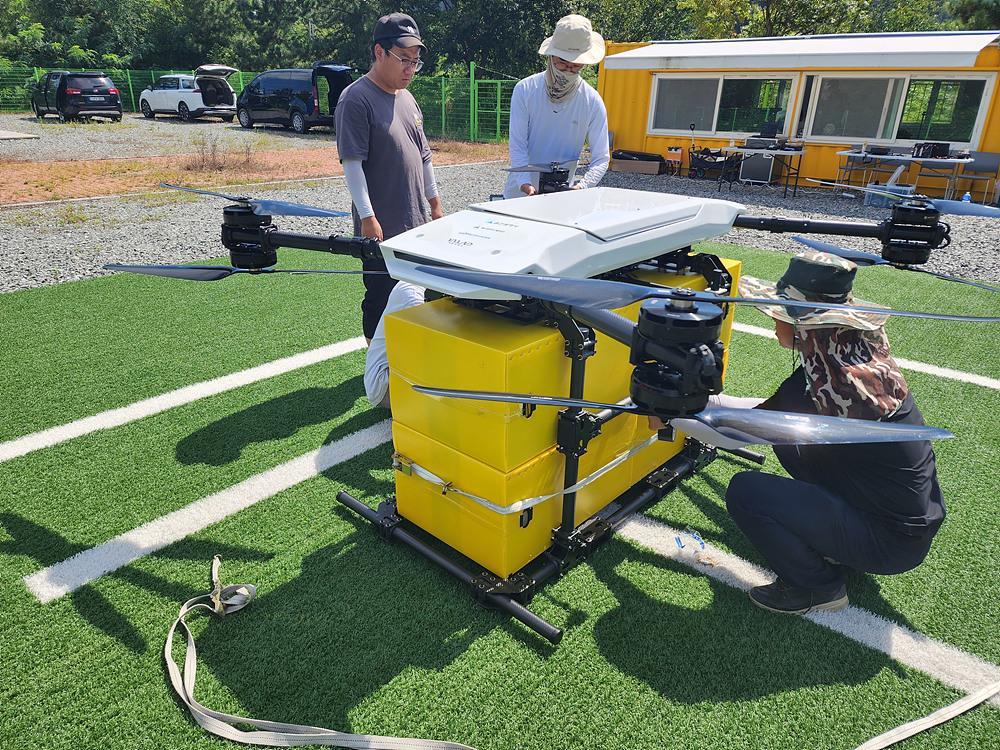
Drone stations perform drone maintenance tasks in place of humans. When a drone finishes its work or has a low battery, it sends a signal to the drone station, guiding it to land safely on a landing pad located on top or beside the main body of the drone station. Upon landing, the drone is directed inside the station, where a robot arm detaches the battery and replaces it with a new one. The drone is then sent back to the landing pad to take off for its next mission. The detached battery is recharged and ready for use in the next task.
Having a drone station enables unmanned control of industrial drones. This means that in locations like dams, power plants, remote mountain areas, isolated roads, or islands, industrial drones can be operated without the need for human presence. This allows for 24-hour operations. The drone station not only replaces the drone's batteries but also assesses whether the environmental conditions are suitable for the industrial drone's work. It's designed to withstand harsh weather conditions, such as heavy winds or snow, to ensure that the drones can work even in adverse situations. This is precisely what Vololand creates: these drone stations.
CEO Ahn Seong-ho incorporated his experience and expertise into drone stations. First, he incorporated precision landing guidance and an integrated control system to ensure that drones can safely land without incidents or collisions in any situation. Then, he conducted research and development to create compatible technology for drone stations, tailored to various industrial drones of different sizes, roles, and functions, making sure they are the most suitable for their specific tasks.
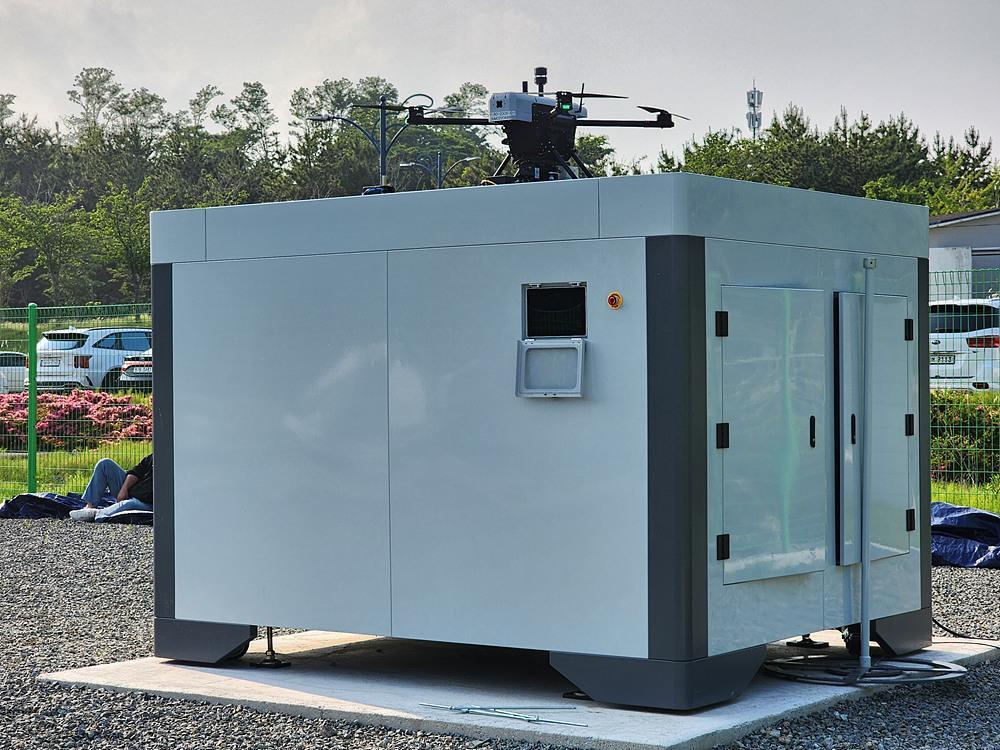
As a result, Vololand can now tailor drone stations to perfectly suit various industrial drones based on their appearance, size, and flight mode. They have the capability to create custom-made drone stations for not only conventional industrial drones with propellers but also for drones equipped with vertical take-off and landing (VTOL) capabilities.
CEO Ahn Sung-Ho continuously researched technologies to enhance the operational stability of drone stations and industrial drones. These technologies include battery cell balancing to ensure uniform movement of the drone's battery, temperature control for maintaining consistent battery temperatures, weather observation sensors for detecting external and internal data of the drone station, and a cloud system for remotely managing data collected by industrial drones. Vololand's drone stations are already in operation in various locations, including Ulsan City and Ulju-gun.
Vololand not only produces drone stations but also industrial drones. They have chosen to develop tethered drones, a wired connection method. When people think of drones, they often envision wireless drones with multiple propellers flying freely in the sky.
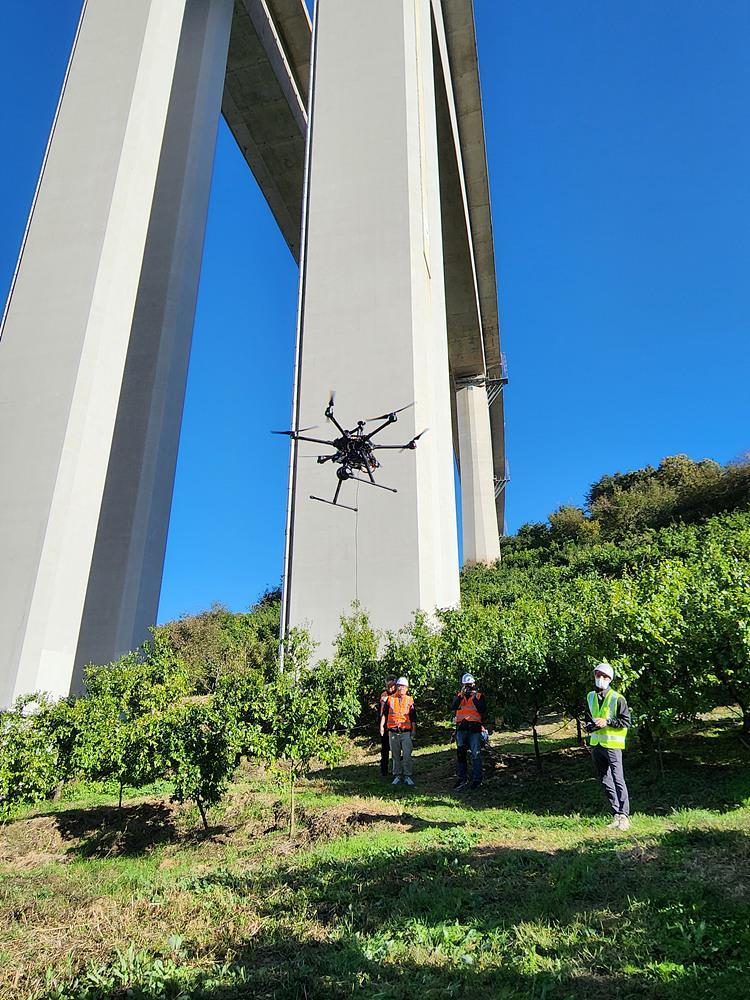
Tethered drones are connected to a tethered line, which limits their flight range and altitude. However, they can fly for more than 10 hours, making them useful for extended operations in one location. Tethered drones are already being used in various fields, including monitoring military facilities, checking traffic conditions on highways, transmitting communication signals to remote areas, and firefighting in high-rise buildings.
Ahn Seong-ho, the CEO of Vololand, previously conducted research on wireless and tethered painting drones that carried paint for painting buildings from above or the side. The expertise gained from this research was integrated into Vololand's tethered drones. When a tether is severed during the flight, tethered drones almost always crash. This is because there is a very brief moment when the center of gravity shifts, and the thrust of the propellers changes, disrupting the balance of the drone's body.
In contrast, Vololand's tethered drones behave differently. They precisely control the propeller's rotation speed, allowing the drone to self-recover even when the weight distribution or balance is disrupted. They have excellent nighttime operability and a payload capacity of approximately 10 kilograms, making them highly versatile.
Ulsan City, in collaboration with the Design-Lead Manufacturing Innovation Center, is steadily advancing the enhancement of drone technology.
CEO An Seong-ho is involved in producing major control components for drone stations and tethered drones in order to enhance their completeness. He does not skimp on investing in the improvement of component performance to strengthen competitiveness. Recently, they have completed the development of an Artificial Intelligence Edge Computer (SLAMer) that can immediately process and analyze data collected by drones, and it is ready for release. Thanks to this, Vololand's industrial drones have the capability to analyze aerial footage on the spot, without the need to transmit it to a server, allowing them to perform tasks quickly and accurately.

Ulsan City is actively promoting various drone-related businesses to support the growth of Vololand. Ulsan City, Ulju-gun, is currently progressing with the development of drone smart solutions and platform construction, which is part of the Drone Industry Development Basic Plan and Regulatory Reform Roadmap 2.0. This initiative involves the validation of services using industrial drones for mountainous terrain inspection in the Yeongnam Alps, crop management, crime prevention, urban management, and nuclear power plant safety assurance, among others. Vololand is participating in this project to research drone stations and delivery drones.
Vololand is conducting research on a payload-capable delivery drone with the assistance of partner companies and institutions to operate in Ulsan Metropolitan City. As part of the 2023 Ministry of Land, Infrastructure, and Transport's Drone Demonstration City Development Project, this payload-capable delivery drone is designed to transport heavy-duty protective gear weighing approximately 50 kg. Its mission is to swiftly and accurately deliver protective gear in case of accidents at nuclear power plants. Vololand has applied for a patent for the "FC automatic control function," which detects real-time changes in payload weight to enhance flight stability. Thanks to this technology, the drone is expected to be used for safe delivery of various goods, not just protective gear.

Vololand has partnered with the Ulsan Design-Led Manufacturing Innovation Center of the Korea Institute of Design Promotion. They have joined hands to conduct design improvement research aimed at refining the appearance, changing materials, and enhancing functionality of the drone station. Thanks to their advice, CEO An Seongho was able to make the drone station's structure better and significantly improve its ability to withstand temperature fluctuations and durability. He expresses his gratitude for their assistance.
Hiring Talent to Soar Together, Recruiting Software Partners to Pioneer the Korean Drone Market
With support and achievements under its belt, Vololand dreams of a second leap. Thanks to its diverse business endeavors, the company has stabilized its revenue, enabling it to attract talent and secure investment capital. The first step is to seek individuals or partner companies to strengthen "drone software and design capabilities." Most of Vololand's employees are aerospace experts and drone developers. By enhancing their software and design capabilities, Vololand is poised to take several more steps forward.
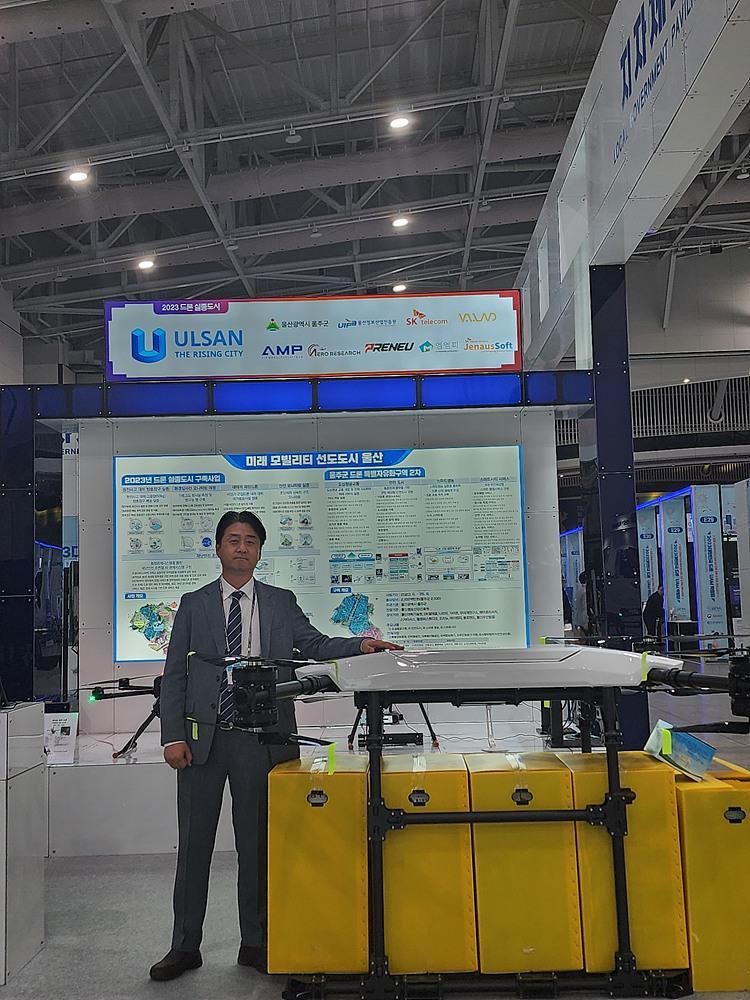
Vololand is also in the process of securing its "first round of investment capital." Given its track record of developing various drone technologies internally and achieving results, the company is confident that attracting investment capital will enable it to scale up its operations smoothly, as emphasized by CEO An Seong-ho.
Vololand has also set its sights on becoming a leader in "internalizing drone technology." Currently, the global industrial drone market is dominated by Chinese companies. Therefore, CEO An Seong-ho emphasizes the importance of internalizing drone technology in South Korea. This is crucial to prevent dependence on foreign technology and to become a stepping stone for promising industries like autonomous flight and UAM (Urban Air Mobility). He also stresses the need for the government to create various opportunities for testing and support the revival of the drone industry in South Korea.

When the government provides support to the drone market, Vololand is determined to put all its efforts into establishing the "Korean drone research and development market." Drone stations have the potential to expand both the operational range and application areas of industrial drones. As the completeness of this technology improves, the range of applications for South Korea's specialized industrial drones, i.e., Korean drones, will also broaden. Vololand emphasizes that drones are essential for smart city development plans taking place across South Korea and aims to prove the utility of Korean drones and drone stations in this context.
Based on drone technology, Vololand aims to contribute to UAM Era
Vololand, which has participated in the construction of drone test cities in various locations across South Korea, including Ulju-gun in Ulsan, aims to leverage the results of this project for further growth. They are actively recruiting talent and partnering with companies to strengthen their capabilities in component and technology development for industrial drones. In addition to government projects, they are also building their business acumen to pioneer the entire field of industrial drones.

An Seong-ho, the CEO of Vololand, has plans to demonstrate the competitiveness of industrial drone technology through practical applications and then expand their business to include monitoring and surveillance of infrastructure such as railways and highways. The foundation for these plans lies in drone stations. Vololand is currently developing drone stations that complement their existing industrial drones while also planning to introduce their own industrial drones. An Seong-ho mentioned that these new products will be smaller, lightweight, and versatile compared to existing models.
Vololand has built its technical capabilities in various aspects of industrial drones, they plan to propose collaboration with promising drone companies in South Korea, as well as businesses specializing in electronics, telecommunications, and security. They believe that collaboration and symbiosis are essential to realizing the vast growth potential in the industrial drone sector.
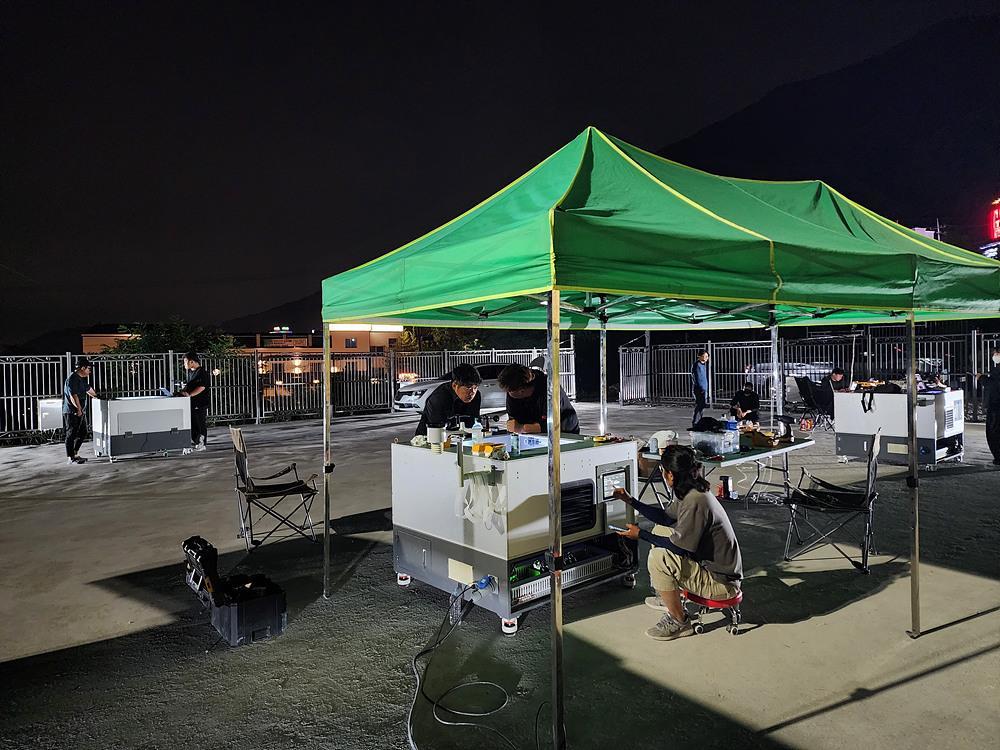
An Seong-ho, the CEO, stated, "We aim to establish ourselves as a globally recognized manufacturer of drone stations and tethered drones, not only in South Korea but worldwide. We will refine industrial drone technology and grow into a company that provides power supply and monitoring systems for UAM, power conversion modules for electric vehicles, and strengthens various related industries."
IT Dong-A reporter Cha JuKyeong.(racingcar@itdonga.com)
